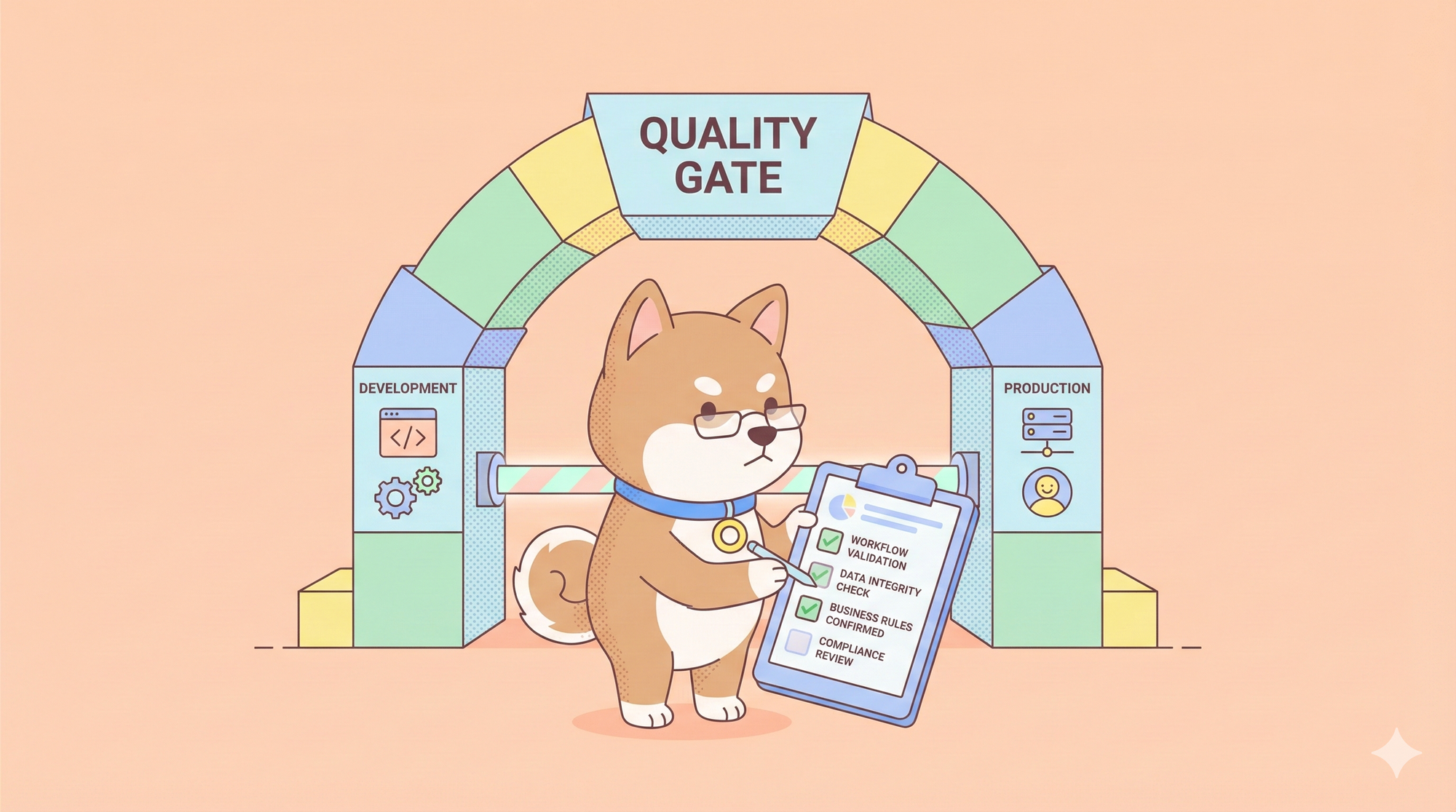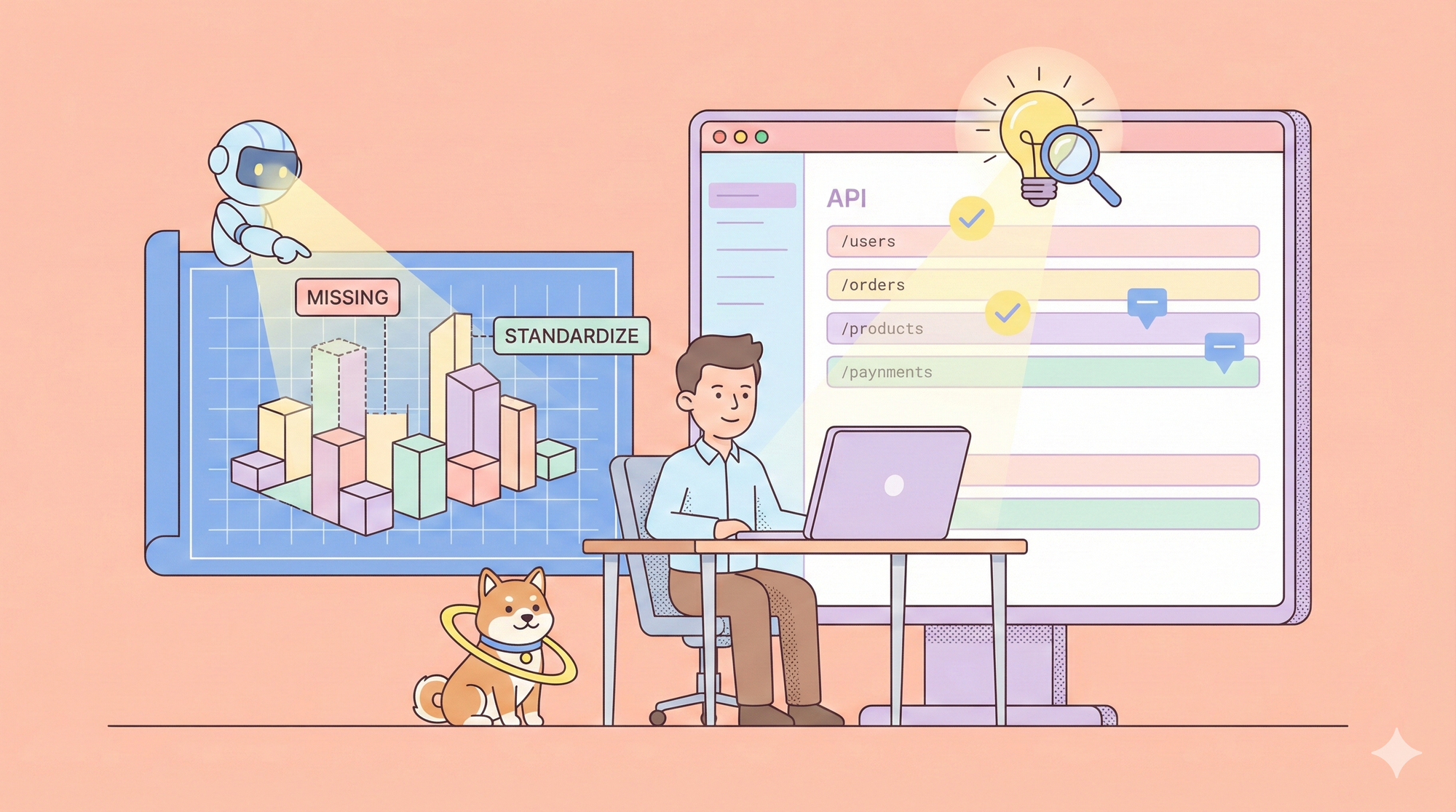Gone are the days when setting up a complex development environment was a mandatory first hurdle. Cloud-based Integrated Development Environments (IDEs) have revolutionized how we learn, build, and collaborate on code. Among the most popular and user-friendly platforms in this space is Replit.
Replit offers a powerful, browser-based coding environment that supports dozens of programming languages, making it an ideal choice for beginners, educators, and developers looking to quickly prototype ideas. A significant part of its appeal lies in its generous free offering. But with the increasing buzz around Artificial Intelligence in coding tools, many users wonder: can you leverage Replit's AI capabilities without opening your wallet?
This article will guide you through setting up and using Replit's free Starter plan, explore its features and limitations, clarify the situation regarding free access to Replit's advanced AI tools.
What Exactly is Replit?
Think of Replit as your instant coding machine in the cloud. It provides an all-in-one platform accessible directly from your web browser. When you create a project (called a "Repl"), you get:

- A Code Editor: A robust text editor with syntax highlighting, code completion (basic), and other standard features.
- A Runtime Environment: The necessary compilers, interpreters, and system resources to execute your code in your chosen language (Python, JavaScript, Java, C++, Go, Rust, and many more).
- A Console/Terminal: An interactive shell to run commands, see output, and interact with your program.
- Package Management: Easy ways to install libraries and dependencies for your project.
- Version Control: Integration with Git and Replit's built-in version history.
- Collaboration: Real-time multiplayer editing, allowing multiple users to code in the same Repl simultaneously.
- Hosting: Basic capabilities to run web servers and share your applications.
This seamless integration removes the friction often associated with setting up local development environments, making it incredibly easy to jump right into coding.
Introducing Replit AI: The Intelligent Coding Assistant
Replit hasn't just stopped at providing a great cloud IDE; it has integrated Artificial Intelligence features designed to augment the development process. Replit AI generally refers to a suite of tools, often powered by large language models, that can:
- Improve Visual design: With just one prompt you can transform your whole design.

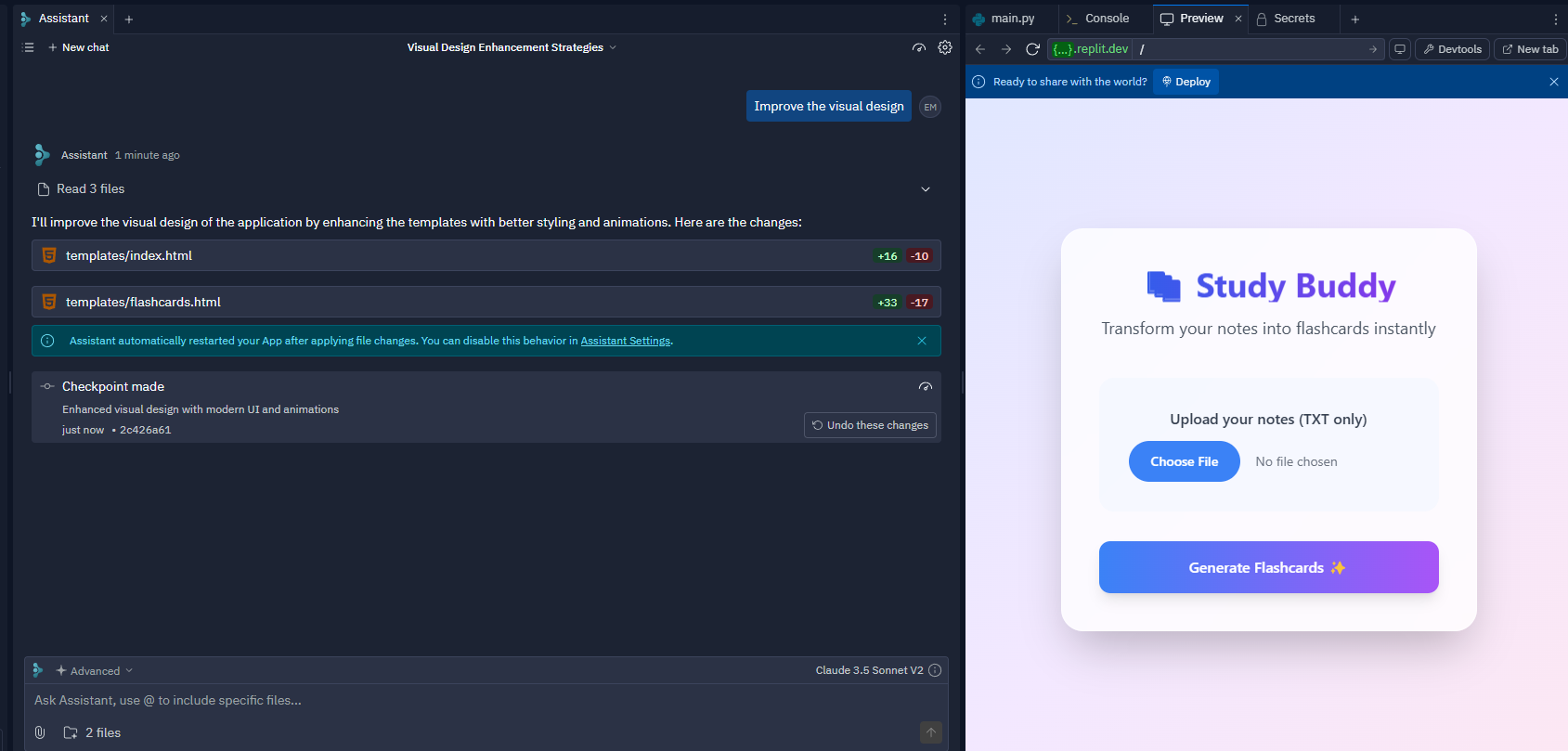
- Generate Code (Ghostwriter): Suggest single lines or entire blocks of code based on comments or context.
- Explain Code: Break down complex code snippets into plain English.
- Debug Code: Identify potential errors and suggest fixes.
- Transform Code: Refactor code or translate it between languages.
- AI Chat: An interactive chat interface where you can ask coding questions, get help, and brainstorm ideas directly within the IDE.
- AI Agents (as discussed in resources like DataCamp): More advanced AI capabilities potentially capable of autonomous tasks or complex problem-solving within the Replit environment.
These AI features promise to accelerate development, aid learning, and help overcome coding challenges. However, developing and running these sophisticated AI models requires significant computational resources, which naturally leads to the question of cost.
Getting Started: How to Use Replit for Free via the Starter Plan
Replit is committed to accessibility, and its Starter plan is completely free to use. This plan provides a fantastic entry point into the world of coding and the Replit ecosystem. Here’s how to get started:
Create Your Free Account:
- Navigate to the Replit website (replit.com).
- Click the "Sign Up" button, typically located in the top right corner of the homepage.

You'll have several options for creating your account:

- Using your email address and creating a password.
- Authenticating via your existing Google account.
- Authenticating via your existing GitHub account.
- Choose your preferred method and follow the on-screen prompts to complete the registration.
Automatic Free Plan Access:
- Once you have successfully signed up and logged in, you'll land on your Replit dashboard or homepage.
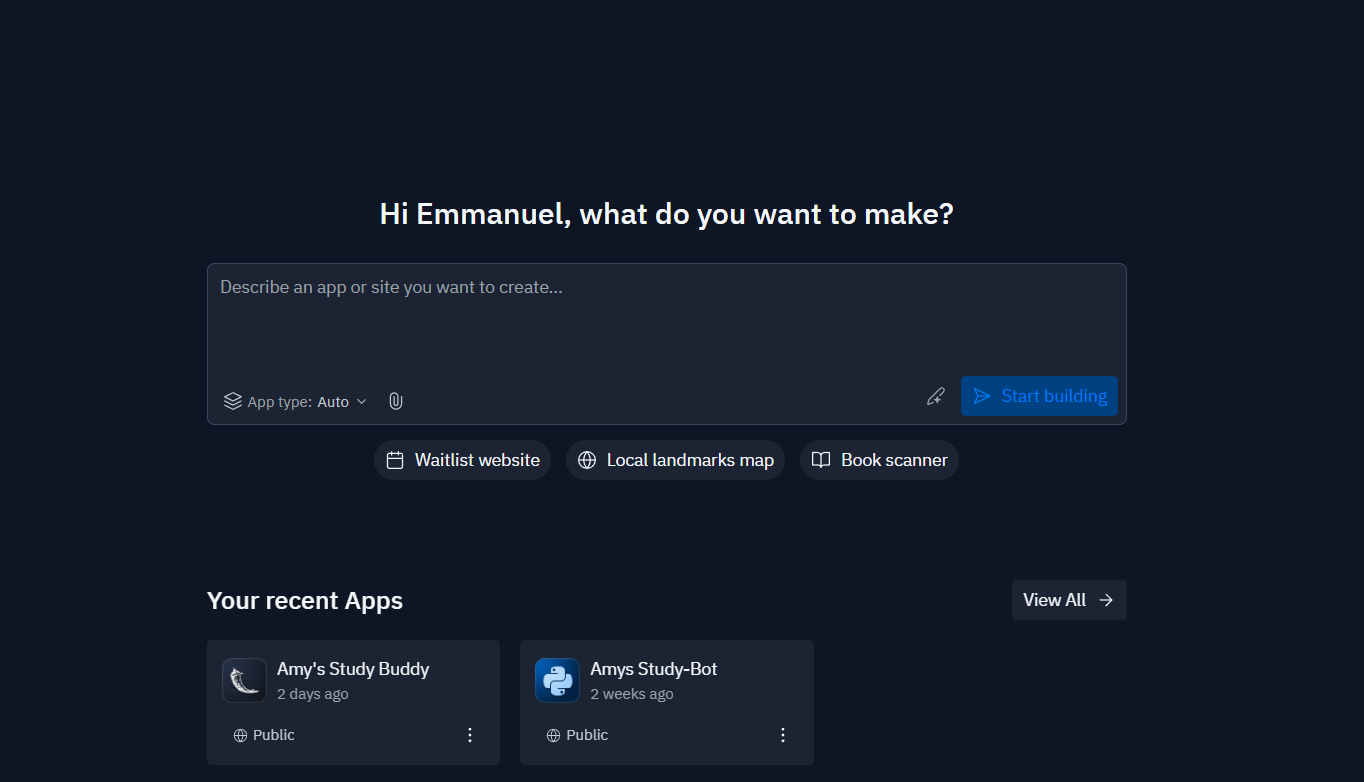
- The good news is: you don't need to manually select the free plan. You are automatically placed on the free Starter plan by default. There are no hidden fees or trial periods for this basic level of access.
Start Your Coding Journey:
- From your dashboard, you can immediately begin creating projects. Click the "Create App" button (often represented by a '+' sign).

- You'll be prompted to choose a template based on the programming language or framework you want to use (e.g., Python, Node.js, HTML/CSS/JS, Java, C++). You can also import repositories directly from GitHub.

- Give your Repl a name (Replit will suggest one).
- Click "Create App."
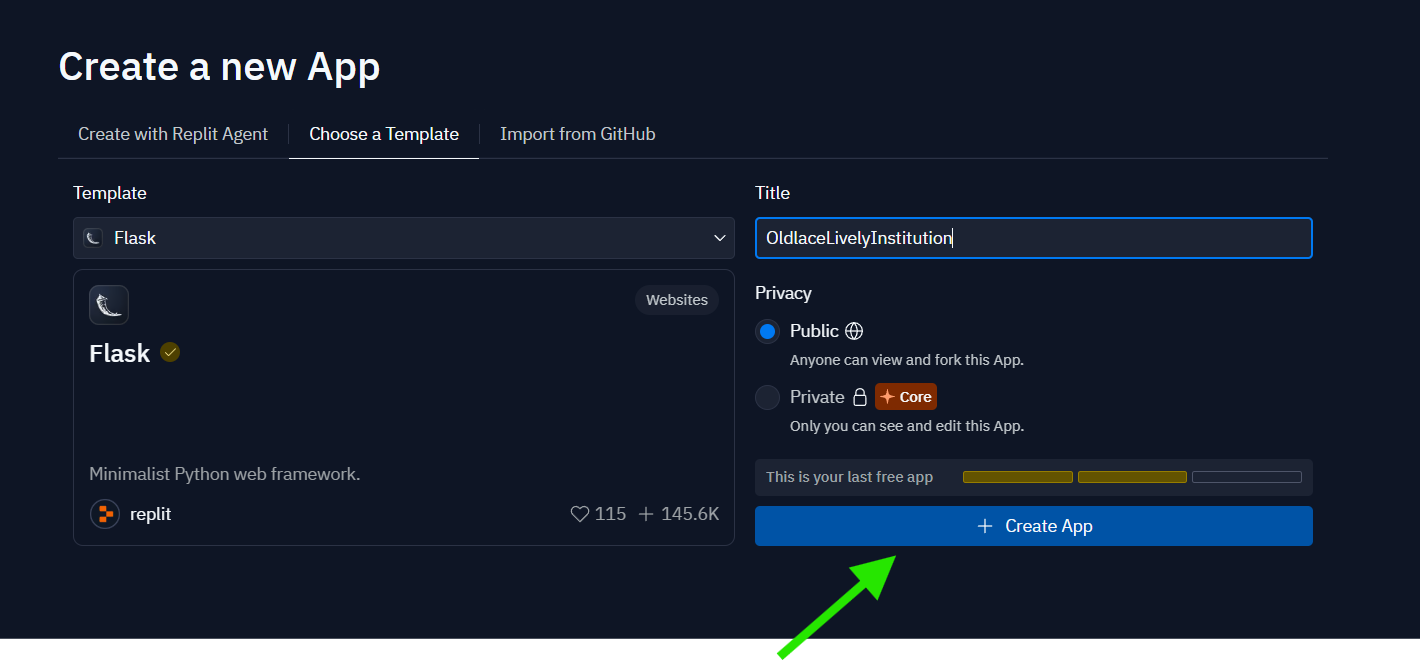
Explore the Replit Interface:
- Your newly created Repl will open, presenting the integrated environment:
- File Navigator (Left Panel): Shows the files and folders in your project.
- Code Editor (Center Panel): Where you'll write and edit your code.
- Console/Shell (Right Panel): Where your code's output appears, and where you can run commands. You might also find tabs here for Shell access, version control, secrets management, and potentially the AI Chat (though its full functionality might be limited on the free tier).
- Familiarize yourself with the layout. click the prominent "Run" button to see it execute.


The Crucial Question: Is Replit AI Free?
This is where we need to be precise. While you can access the Replit platform for free using the Starter plan, the advanced Replit AI features, such as Ghostwriter (code completion/generation) and the full capabilities of the AI Chat or AI Agents, are not included in the free tier.

- Free Tier Limitations: The free Starter plan focuses on providing the core IDE experience. Access to the sophisticated AI coding assistant features typically requires a paid subscription (like the Replit Core plan, previously Hacker/Pro) or the use of Replit's virtual currency, "Cycles," which are usually purchased or earned through specific activities.
- What Might Be Free (or Partially Available)? Replit's offerings can change. Sometimes, platforms offer limited trials or very basic versions of AI features for free users. For instance, you might encounter basic, non-AI-powered code suggestions or a limited number of free queries to the AI Chat. However, do not expect the full suite of AI capabilities described in promotional materials or tutorials (like the DataCamp article likely showcasing the premium features) to be available without payment.
- Running Your Own AI Code: It's important to distinguish between using Replit's built-in AI tools and running AI/Machine Learning code within a Repl. On the free Starter plan, you absolutely can write and run code using popular open-source AI/ML libraries (like
scikit-learn,pandas, potentially smaller models fromTensorFlow LiteorPyTorch), provided your code doesn't exceed the resource limits of the free tier (CPU, RAM, storage). This is "doing AI on Replit for free," but it's different from using Replit's proprietary AI assistant.
Understanding the Limitations of the Replit Free Starter Plan
While incredibly useful, the free Starter plan does come with certain limitations you should be aware of:
- Repl Resource Limits: Free Repls have constraints on CPU power, RAM, storage space, and network egress. Complex, resource-intensive applications (like training large machine learning models or running demanding game servers) might hit these limits.
- Public Replits: By default, Repls created on the free plan are public, meaning anyone with the direct link can view the code and run the project. While not easily discoverable through a general search, they aren't private. True private Repls, which are not publicly accessible even with a link, require a paid plan.
- Repl Limit & Archiving (Based on Provided Info): The information provided mentions a "limit of 3 Replit projects at a time" and that older Repls might be automatically deleted after a year if inactive or if limits are exceeded without upgrading. Note: Replit's specific policies on the number of active/archived Repls can evolve, so always check their current pricing page for the most up-to-date details. The core idea remains: the free tier isn't for unlimited project hoarding.
- Always On / 24/7 Hosting: Free Repls are designed for interactive development and typically go to sleep after a period of inactivity to conserve resources. They are not intended for hosting applications that need to be running continuously, 24/7.
- No Access to Premium Features: Features like enhanced performance (faster machines), dedicated support, private Repls, and, crucially, the full Replit AI suite (Ghostwriter, etc.) are reserved for paid users.
A common question in the Replit community, revolves around keeping Repls running continuously without paying. This is often desired for hosting Discord bots, simple APIs, or lightweight websites.
The reality is that Replit's free tier is not designed for reliable 24/7 hosting. While users have historically employed workarounds (like using external services like UptimeRobot to periodically ping the Repl's web server to keep it awake), these methods are often unreliable, may violate terms of service, and don't guarantee continuous uptime.
Replit offers Deployments as its official, paid solution for hosting applications that require high availability and continuous operation. If you need your project online 24/7, upgrading to a paid plan or using the Deployment features is the intended and most reliable path. Trying to force 24/7 operation on the free tier will likely lead to frustration and potential interruptions.
Making the Most of Replit's Free Offering
Despite the limitations and the lack of free access to advanced AI, the Replit Starter plan is incredibly valuable:
- Learning: It's an unparalleled platform for learning new programming languages and concepts without setup hassles.
- Prototyping: Quickly build and test ideas, especially for web applications or scripts.
- Collaboration: Work on group projects or share code snippets easily with others.
- Teaching: An excellent tool for educators to teach coding in a consistent environment.
- Experimenting with AI Libraries: Use it as a sandbox to run code using standard ML/AI libraries on smaller datasets or pre-trained models.
Conclusion: Free Powerhouse with Paid AI Enhancements
Replit provides a robust and highly accessible platform for coding directly in your browser, and its free Starter plan is a testament to its commitment to lowering the barrier to entry for developers. Signing up and starting your coding journey is straightforward and completely free.
While the platform itself is free to get started with, it's crucial to understand that the advanced Replit AI features, like Ghostwriter and the full AI Chat capabilities often highlighted in tutorials and discussions, are premium offerings requiring a paid subscription or Cycles. The free tier does not include these sophisticated AI assistants, though you can certainly run your own AI-related code using standard libraries within the free plan's resource limits.

